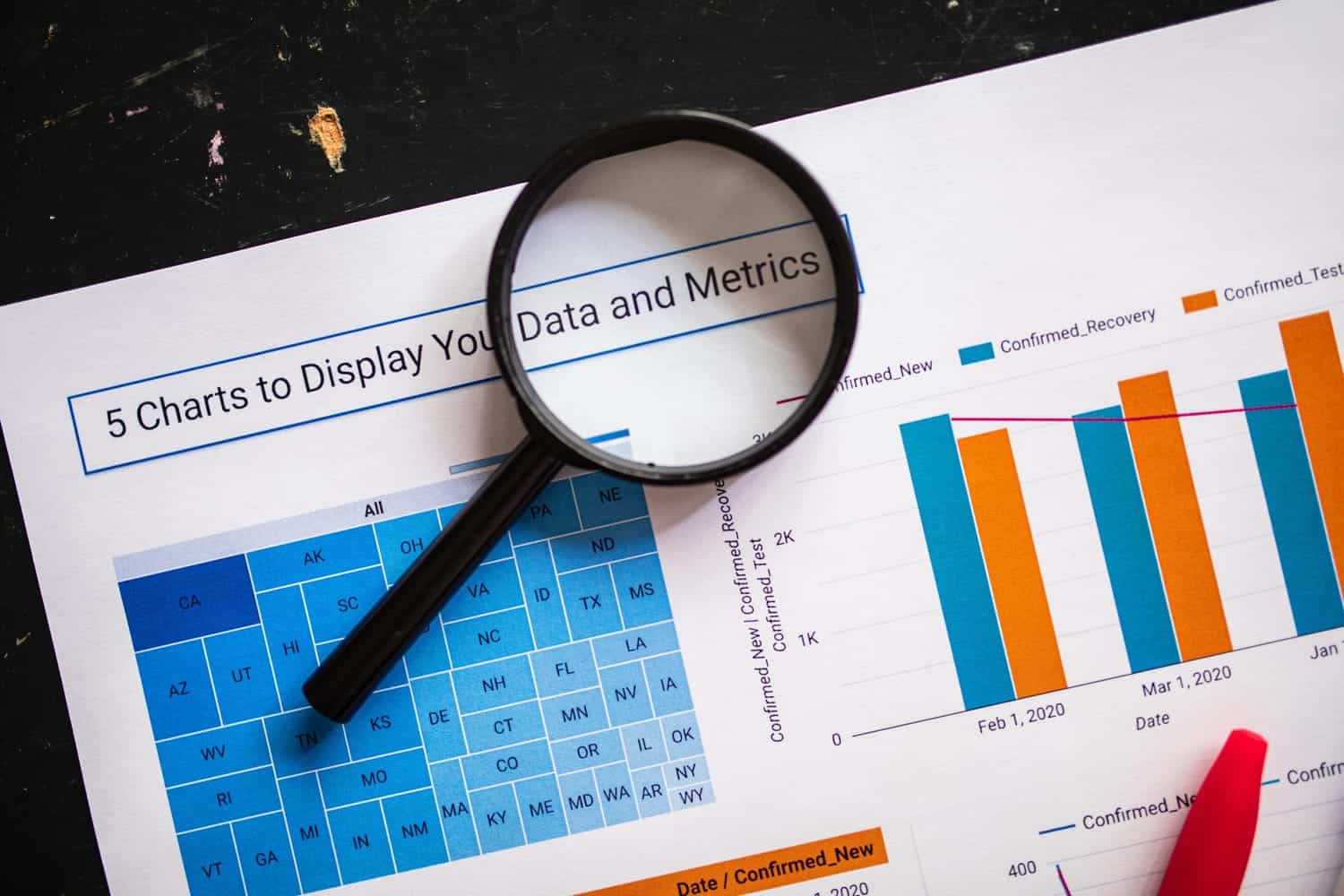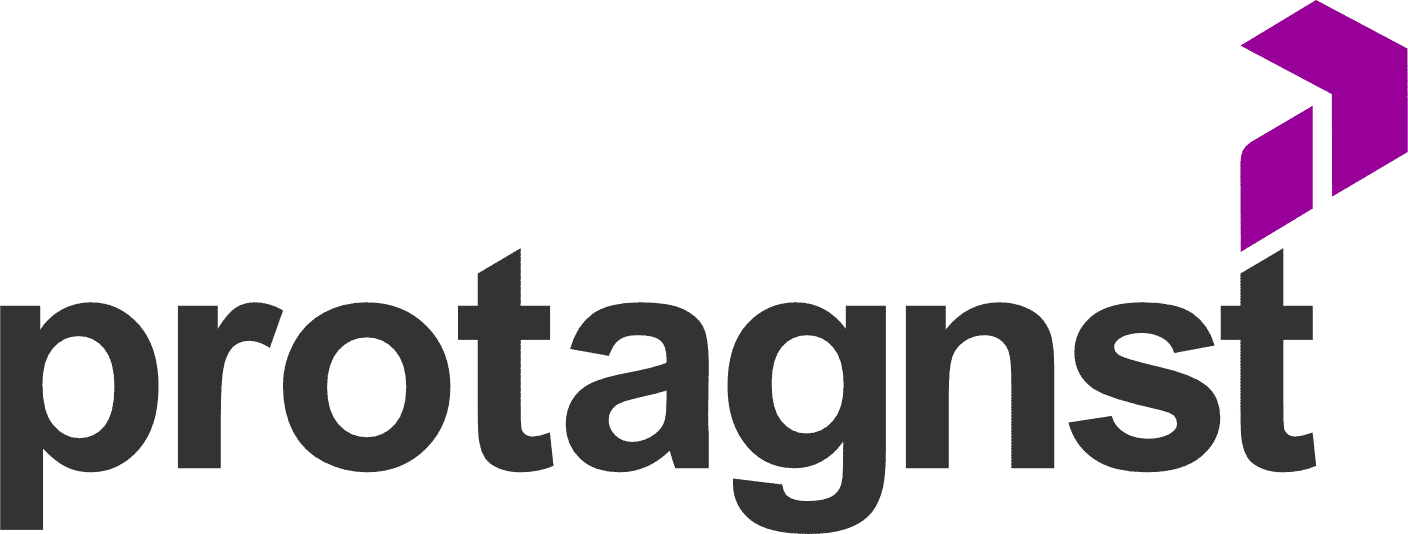Sales intelligence, both in English and Portuguese, has become a crucial element for optimizing sales processes in today’s landscape. This concept goes beyond simply collecting data and embraces the analysis and application of strategic information that allows sales teams to operate more effectively, personalized, and competitively.
Have you ever wondered why some companies manage to maintain a competitive advantage in such a dynamic market? The answer lies in data. Personalization and segmentation based on sales intelligence are more than just differentiators—they are consumer expectations. More and more, customers demand tailored approaches that take into account their individual needs and behaviors.
Studies show that 70% of buyers expect a personalized approach from salespeople. This reinforces the importance of a data-driven sales strategy. Sales intelligence not only helps identify promising leads but also directs team efforts towards opportunities with the highest potential for conversion. What you do with the data you collect is what determines the success of your sales pipeline.
Now that we’ve given an introduction to the concept of sales intelligence, the next step is to understand how it can be effectively implemented and the impacts it can bring to your business.
Mapa do Conteúdo:
ToggleHow Sales Intelligence Optimizes the Sales Cycle

Sales intelligence is much more than just a support tool. It’s radically changing the way sales teams conduct their strategies, providing valuable insights that guide every step of the process. From prospecting to closing deals, sales intelligence allows salespeople to work more precisely and personalized, maximizing conversion potential.
The Importance of Data in the Sales Process
In a data-driven sales world, accurate information is key to more informed and assertive decisions. Sales intelligence is based on the collection and analysis of this data, allowing teams to have a clear view of prospect behavior and adjust their strategies in real time.
According to the material we analyzed, data is not just important, but fundamental to the effectiveness of any sales operation. They provide information about past customer interactions with your brand, reveal their preferences, and help identify personalization opportunities. These insights not only improve conversion chances but also strengthen customer relationships.
A common practice that exemplifies the effective use of data is lead segmentation. From demographic and behavioral information, you can identify which prospects are more likely to buy and focus your efforts on them. Personalization, in this context, is more than just a differentiator—it’s a requirement. Providing a custom experience not only generates more sales, but also increases customer satisfaction and loyalty.
The Role of Personalization in the Sales Cycle
One of the biggest advantages of sales intelligence is its ability to promote personalization at scale. Instead of generic approaches, which are often ineffective, salespeople can tailor their communication and offers based on the specific needs of each customer. This means that the sales process becomes more human, relevant, and targeted.
A study cited in the attached content points out that 35% of companies adopting sales intelligence report a significant increase in closing rates. This data reflects the direct impact of personalization on sales success. When a salesperson presents a specific solution to a customer’s problem, the chances of success are drastically amplified.
This personalization process is not limited to personalized emails or more targeted calls. It involves understanding the behavior and motivations of leads deeply, allowing each interaction to be an opportunity to advance the business relationship.
Sales Intelligence Tools: Automation and Effectiveness
With the growing demand for personalization and optimization, sales intelligence tools have become indispensable. Platforms like Gong, HubSpot, and Crunchbase offer a range of features that not only help collect relevant data but also analyze it and use it strategically. These tools are capable of automating manual processes, such as lead research and interaction tracking, allowing salespeople to focus on what really matters: building relationships and closing deals.
Among the main benefits of these tools are:
- Reduced research time: Sales intelligence solutions are able to process and organize large amounts of data, making it easier to identify qualified leads.
- Automation of repetitive tasks: With automation, salespeople can save time and effort by leaving tasks like follow-ups and lead qualification in the hands of technology.
- Access to actionable insights: Tools not only collect data but also provide insights ready to use, such as purchase signals and personalized recommendations for each prospect.
Sales Intelligence and Prospecting
Prospecting is one of the most challenging stages of the sales cycle, but it’s also where sales intelligence can make the biggest difference. By identifying leads with the highest potential for conversion, sales intelligence tools optimize this stage to the extreme.
Through criteria such as geographic location, purchase behavior, and previous interactions, these platforms are able to “filter” the best leads, allowing the sales team to focus only on qualified prospects. This significantly reduces the time wasted with unproductive contacts and increases the chances of success.
Tools that use machine learning are also essential for this process. They are capable of analyzing large amounts of data and making predictions based on behavioral patterns, identifying those prospects who are closest to making a purchase decision. This provides a competitive advantage by allowing sales teams to act proactively, reaching the right customers at the right time.
The Role of Sales Intelligence in Personalizing the Customer Journey

The customer journey has never been as complex and personalized as it is today. With the growing number of interactions between businesses and consumers, understanding each touchpoint is vital to deliver a unique and effective experience. Sales intelligence plays a key role in this scenario, helping sales teams map, analyze, and optimize this journey in a personalized way.
Understanding Customer Behavior
With sales intelligence, companies can go beyond traditional marketing and sales strategies. Specialized tools can identify consumer behavior patterns in real time, allowing adjustments to the approach based on the customer’s needs and expectations. This includes everything from the interactions the customer has with the company to the products they view on the website or the content they consume on social media.
This ability to monitor customer behavior provides valuable insights for salespeople. By understanding which products or services are most relevant to the customer, the sales team can adjust their communication, offering exactly what they are looking for. For example, if a lead repeatedly viewed a particular product on your website, sales intelligence can suggest that the salesperson offer a special deal or additional content that accelerates the purchase decision.
Personalization as a Decisive Factor
Today, personalization goes far beyond a simple email with the customer’s name. It’s about creating an experience completely tailored to the reality and interests of that prospect. With the help of data collected by sales intelligence tools, you can understand what the potential customer’s pain points, needs, and expectations are, creating an approach that resonates with them.
Personalization is a decisive factor for success in the sales process, especially in a market where competition is increasingly fierce and consumers have a vast range of choices. According to research mentioned in the content we are exploring, 70% of buyers expect a personalized approach, which means that sales intelligence is not just useful, but essential.
The Value of Data in the Sales Cycle
The use of data throughout the sales cycle not only improves the accuracy of actions but also increases the overall effectiveness of the process. The collection of structured data allows salespeople to make informed decisions, based on concrete evidence. This completely changes the scenario, taking the sales process out of the realm of “guesswork” and placing it in a position of strategy guided by valuable information.
Imagine a sales team that knows exactly which leads are ready to buy and which still need more time or educational material. This allows each salesperson to act more intelligently, directing efforts where they will actually generate results. The return on investment (ROI) of this type of approach tends to be significantly higher.
In addition, personalization extends to the development of content and marketing approaches. Companies that use sales intelligence to adjust their campaigns according to customer needs report a substantial increase in conversion rates, as they can reach the right audience with the right message at the right time.
How Personalization Increases Conversion Rates
One of the main reasons personalization is so effective is relevance. Today’s consumers don’t want to be approached with generic offers; they expect companies to understand their needs and offer suitable solutions. This expectation has led to an increase in demand for customized experiences, and companies that manage to offer this are rewarded with higher conversion rates.
Sales intelligence allows businesses to deliver this personalization at scale. Using tools that automate data collection and analysis, it is possible to create sales and marketing strategies that are much more specific and relevant. A practical example of this would be a software company that adjusts its product demonstrations according to the needs of each customer, based on the data collected during the prospecting phase.
This type of personalization not only makes closing sales easier, but also creates a stronger relationship with the customer, increasing their satisfaction and loyalty to the brand. By treating the customer as unique, and not just as one more on the email list, the chances of maintaining a long-term relationship multiply.
Sales Intelligence Tools and Personalization
Several sales intelligence tools are designed to help businesses implement this personalization in their processes. Solutions like **HubSpot**, **Outreach**, and **Gong** are widely used to collect relevant data and automate personalization at each customer touchpoint. They allow:
- Track past interactions, such as emails opened or content viewed.
- Identify the products or services that most attract the interest of each lead.
- Automate the delivery of personalized messages, according to the stage of the funnel the customer is in.
Automation, when implemented well, not only saves time but also ensures that communication is always relevant and timely. This gives the sales team the ability to focus on strategic conversations while the software takes care of more operational and repetitive interactions.
Personalization, driven by sales intelligence, offers a clear advantage for any company that wants to stand out in today’s competitive market. Companies that quickly adapt to this reality, adopting personalization tools and strategies, tend to see a direct impact on their success rates.
Essential Sales Intelligence Tools: How to Choose and Implement

For sales intelligence to be truly effective, it is essential to have the right tools. There are a variety of options on the market that allow you to collect, analyze, and apply data strategically, but choosing the ideal tool depends on the specific needs and characteristics of your team and your industry.
How to Choose the Right Tool
When considering a sales intelligence tool, you should evaluate some essential factors that go beyond just technical functions. The wrong choice can not only hinder the effectiveness of your team but also consume valuable resources without adequate return.
Here are the main criteria to consider:
-
Data Accuracy: The quality of the data provided by the tool is crucial. Inaccurate or outdated data can compromise decision-making and hurt your sales. Tools like ZoomInfo and Cognism are known for providing highly accurate and up-to-date information, which ensures greater confidence in prospecting and customer relationships.
- CRM Integration: The ability to integrate the tool with the CRM your company already uses is a decisive factor. Tools like HubSpot and Salesforce are popular options precisely because of their excellent CRM integration, which facilitates continuous data updates and avoids manual errors.
- Automation: Sales intelligence should help automate repetitive tasks, such as sending prospecting emails or creating reports. Tools like Outreach and Gong are designed to automate low-value interactions, allowing your sales team to focus on strategic negotiations.
- Analytics Features: Beyond collecting data, it’s important that the tool offers valuable and actionable insights. Tools that use machine learning and predictive analytics, such as Crunchbase, help predict which leads have the highest potential for conversion and at what stage of the sales funnel they are.
- Cost-Benefit: Evaluating the return on investment (ROI) is essential. Not always the most expensive tool will be the best for your team, and it’s important to weigh the cost of the platform with the benefits it offers, especially in terms of productivity and conversion rate.
Main Sales Intelligence Tools on the Market
Now, let’s explore some of the main sales intelligence tools available on the market and how they can add value to your sales strategy.
- Crunchbase
Crunchbase is widely used to identify qualified leads and find new business opportunities. The platform uses real-time data and machine learning to recommend prospects that best align with your company’s profile. It allows you to explore different market segments and filter the companies most relevant to your strategy. - Outreach
Outreach is a platform focused on automating lead engagement. It analyzes sales execution in real time, helping to predict closures and prioritize opportunities. In addition, Outreach provides detailed insights into prospect sentiment, based on interactions they have had with your brand. - Gong
Focused on conversational intelligence, Gong uses AI to record, transcribe, and analyze interactions between salespeople and customers. This allows sales teams to identify success patterns, adjust their approach, and maximize the efficiency of the sales process. The tool is particularly useful for training and continuous communication improvements. - Bombora
Bombora stands out in monitoring purchase intent signals. The platform tracks prospect behavior on a vast network of websites, allowing you to act based on behavioral data and intent signals. This helps focus on leads who are already close to making a purchase decision. - SimilarWeb
Known for its ability to analyze competition, SimilarWeb offers insights into the digital traffic of your competitors and prospects. This tool is valuable for adjusting your marketing and sales strategies, focusing on the best times to approach the customer, based on data from the digital market.
Implementing Sales Intelligence on the Team
Once the ideal tool is chosen, the next step is to ensure your sales team can use it effectively. Implementing sales intelligence should not just be about introducing a new platform, but about creating a data culture.
Here are some essential practices to ensure a successful implementation:
- Team Training
Invest in training for all team members so they can get the most out of the tool’s features. Conduct workshops, online training, and provide ongoing support to ensure that the tool is used effectively and productively. - Defining Clear Goals
Before implementing sales intelligence, set clear and measurable goals. This includes KPIs (Key Performance Indicators) that should be closely monitored, such as increased conversion rates, number of qualified leads, and reduced sales closure times. - Collaboration Culture
Sales intelligence becomes even more powerful when there is collaboration within the team. Encourage salespeople to share their discoveries, insights, and successful strategies, promoting a culture of continuous learning. Platforms like Gong can be particularly useful in this regard, as they help identify patterns and practices that work. - Continuous Monitoring
Implementing the tool is just the beginning. It is crucial that you track the team’s progress and make adjustments as needed. This includes regularly reviewing the data and insights generated by the tools, ensuring that strategies are aligned with the needs of the market and prospects.
The Impact of Sales Intelligence on Commercial Performance
The impact of a well-done implementation of sales intelligence tools can be transformative. Companies that effectively adopt this approach see a significant increase in conversion rates, lead qualification, and the operational efficiency of their sales teams. The reduction of manual tasks and the automation of operational interactions frees up salespeople to focus on the strategic activities that truly impact the bottom line: closing deals.
With the right tools and a well-trained team, sales intelligence can drive business results, ensure greater accuracy in forecasting, and help your company maintain a competitive edge in an increasingly dynamic and data-driven market.
Best Practices for Using Sales Intelligence in Your Day-to-Day

Implementing a sales intelligence solution doesn’t just mean acquiring a tool and training it. Success comes from a series of best practices that need to be incorporated into the sales team’s day-to-day to maximize the benefits offered by data. Below, we present some of these practices, divided into lists to make implementation easier for your team.
1. Maintaining Data Quality and Up-to-Dateness
Data is the backbone of sales intelligence. Maintaining the quality and up-to-dateness of this information is crucial to ensuring that your decisions are based on reliable and relevant data. Here are some actions that can help guarantee this:
- Regular Data Cleansing: Perform frequent audits to remove or correct duplicate, outdated, or incorrect data. CRM tools often accumulate information over time, and without proper maintenance, they can hinder the effectiveness of sales intelligence.
- Real-time Updates: Use tools that automatically and real-time update data, especially critical information such as decision-maker contacts and purchase status. This prevents your team from wasting time with outdated data and incorrect focus.
- Automatic Synchronization with CRM: Make sure your sales intelligence tool is integrated with your CRM, ensuring that all information is continuously and accurately synchronized.
2. Automate Repetitive Tasks to Focus on the Strategic
One of the biggest benefits of sales intelligence is its ability to automate repetitive tasks and free up salespeople to focus on what really matters: strategic interactions with customers. Here are some ways to automate processes:
- Prospecting Email Automation: Use platforms like Outreach to automate sending emails and tracking leads. This ensures that no prospect is forgotten and that each one receives the appropriate attention.
- Automatic Report Generation: Sales intelligence tools can generate automated reports on the status of leads and sales progress, allowing your team to have a clear view without the need to create reports manually.
- Lead Segmentation and Qualification: Automate the classification of leads based on their behavior and characteristics. This allows your sales team to know exactly which leads are most likely to convert, saving time and optimizing efforts.
3. Use Data to Create Personalized Strategies
Personalization is one of the main trends in sales and marketing, and sales intelligence allows you to take this practice to a new level. By personalizing your approach based on concrete data, you increase the chances of conversion. Some tips for this include:
- Analyze Prospect’s Online Behavior: Tools like SimilarWeb and Bombora allow you to track prospect’s online behavior. Use this information to create personalized messages that speak directly to the customer’s interests and needs.
- Offer Relevant Content: By observing the products or services your lead has shown interest in, send educational content or a special offer directly related to their need. This can be done automatically, but with a high level of personalization.
- Dynamic Segmentation: Keep your email lists and prospects dynamically segmented based on new interactions and behaviors. This way, your campaigns will always be up-to-date and relevant.
4. Promote Collaboration and Insight Sharing
Sales intelligence isn’t something that should be used in isolation. By encouraging collaboration and sharing of insights among team members, you increase the effectiveness of the entire sales operation. Consider the following practices:
- Weekly Alignment Meetings: Create regular times for the team to share insights gained through sales intelligence, such as approaches that worked, identified behavior patterns, and strategies that can be replicated.
- Use of Conversational Intelligence Tools: Tools like Gong allow sales interactions to be recorded and analyzed, promoting the sharing of successful practices and identifying areas for improvement.
- Creating Best Practices Documents: As new insights are discovered, compile this information into guides or internal manuals that can be consulted by the sales team. This helps to create a continuous cycle of learning and improvement.
5. Track Metrics and Adjust Strategies in Real Time
Sales intelligence allows you to track in real time what’s working and what isn’t. This gives your team much greater agility when it comes to adjusting strategies, preventing opportunities from being missed.
- Lead Conversion Rate: Closely monitor the conversion rate of qualified leads. If this rate is below expectations, review the data and adjust the approach. Often, small changes in communication can bring big results.
- Sales Cycle: Check if the average time to close a sale is decreasing with the use of sales intelligence. If not, you may need to adjust how leads are being qualified.
- Actionable Insights: Pay attention to the insights automatically generated by the tools, such as alerts on purchase signals or new engagement opportunities. This information is valuable and can change the course of a negotiation.
Final Considerations
Sales intelligence offers an impressive range of benefits for businesses that are willing to adopt it. From personalization to automation, it is capable of profoundly transforming the way sales are conducted. However, for these changes to be successful, it is essential that companies commit to careful implementation and strategic use of the available tools.
Investing in sales intelligence is undoubtedly one of the best ways to optimize your operations and ensure that your sales team is always one step ahead of the competition. But success doesn’t just depend on the tool you choose; it depends on how it’s used day-to-day and the discipline of keeping data up-to-date, promoting collaboration, and adjusting strategies based on real insights.
The revolution in sales processes is happening now, and those who adopt this data-driven approach will have a clear advantage in an increasingly competitive market. Therefore, be prepared to utilize these resources to their fullest and watch your sales team thrive.




